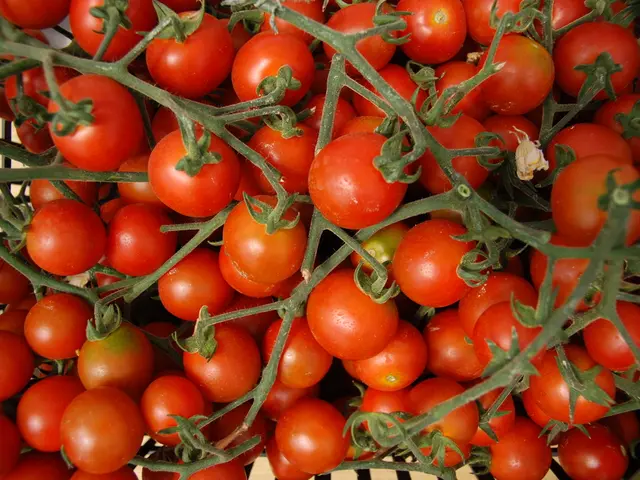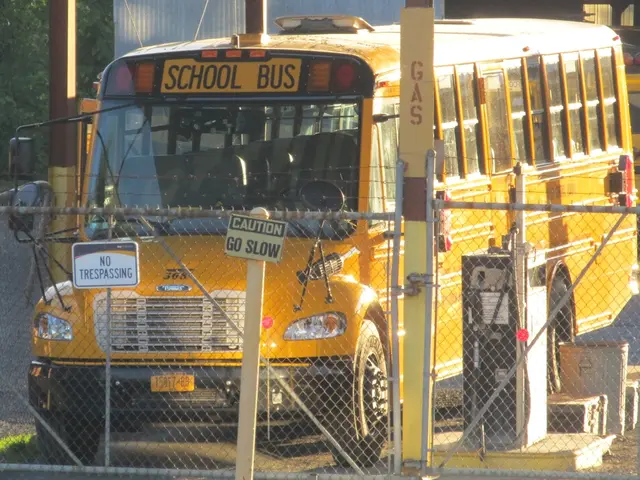Warming Globe Endangers Native Forests and Gardens on Hawaii Island
Rainfall Returns to the Isle: A Look at Hawaii's Forests Amidst Climate Change
With the scent of April showers finally gracing parts of Hawaii, the promise of Mayflowers is still on the horizon. However, some areas have experienced an unusual dry spell this spring season. Hawaii's unpredictable weather is a puzzle, but fortunate rainfalls in East and West Hawaii are stimulating rapid flowering and fruiting this season.
But the situation isn't so rosy for all forest areas. Unique cloud forests, such as Kona's, are under threat due to global warming. The problem is compounded by development and land owners' lack of awareness about the impact of forest destruction on our islands' fresh water supply. Global warming, once considered a theory, is now internationally recognized and accepted as a fact by scientists and governments. This phenomenon will inevitably increase extreme weather conditions like droughts, floods, and severe storms in Hawaii.
Individual action is crucial. With just 10 trees planted per person on the Big Island, we could plant over one million trees. Trees offer numerous benefits, from producing oxygen and acting as windbreaks to locking up carbon, the primary cause of global warming.
Many of the forests and watersheds in Hawaii remain at risk, despite profuse environmental rhetoric. Subdivisions of East Hawaii's forest lands are often divided into small plots, often leading to bulldozing and clearing if owners don't commit to forest preservation.
The circumstances are similar in West Hawaii, where private lands are often cleared and subdivided. Destinations like the Kaloko cloud forest, one of Hawaii's most accessible tropical cloud forests, are under development for agriculture and residential activities. However, county planners are making attempts to persuade developers to protect the forest by implementing conditions that the lots must remain forested, requiring a forest management plan, and allowing landowners to dedicate land to native forests or tree crops, thus lowering tax burdens.
Some developers are taking the lead on Hawaii land stewardship, setting examples that other county communities are beginning to follow. These efforts have focused primarily on eucalyptus species, but it's hoped that various native Hawaiian species, like koa, will also be included for long-term, high-quality forest products. Eucalyptus may not appease those who oppose it, but it's interesting to note that eucalyptus is closely related to the native ohia. These trees are vital food sources for our native honeycreepers.
Kaloko Mauka, a neighborhood in West Hawaii, remains largely covered by native forest. The residents' gardens host an enchanting variety of hydrangeas, hoawa, calatheas, camellias, and more. The area boasts ancient ohia (Meterosideros polymorpha) and giant treeferns that are over a century old. These ferns can grow up to 30 feet or more in height.
The native forest in Kaloko Mauka shelters many rare and endangered species, which local residents are committed to protecting through the Hawaii Forest Stewardship Program. This program empowers residents to dedicate their properties to enhancing this essential and unique watershed. The program is administered by the Hawaii Department of Land and Natural Resources Forestry Division.
In the heart of the subdivision, the Kona Cloud Forest Sanctuary has been designated as a testing ground for palms, tree-ferns, bamboos, bromeliads, and other plant materials. Researchers are tracking the adaptability of these plants for reforestation, agricultural, and landscape purposes. Most of the sanctuary remains preserved in native forest, while the Mauka 15 acres were damaged by grazing and the removal of ohia and hapu'u in the 1960s. As a result, this area was replanted with native and non-native trees to create a pan-tropical forest. The sanctuary's primary goal is to educate people about the importance of forest environments, both biologically and from a spiritual perspective.
Kaloko Mauka provides habitat for numerous endemic and exotic birds, including the Hawaiian hawk, apapane, iiwi, elepaio, amakihi, and many more. Kaloko Mauka has been recognized as essential wildlife habitat and forest watershed. The residents of Kaloko Mauka aspire to set an example of living in harmony with the forest while still maintaining homes and some "forest-friendly" agriculture activities. This harmony is essential if Hawaii's island is to retain the rainfall and watershed required to supply communities at lower elevations.
Some residents believe that East Hawaii has plenty of rain, so forests are unnecessary. However, the importance of forests as rain sponges should not be underestimated. Forests slow down heavy rains and provide moisture, ensuring that streams continue to flow even during light rainfall. Without forests, flooding, drought, and severe erosion become worrying norms. Additionally, grassy areas pose a considerable fire hazard during drought periods.
Tropical forests encompass not only trees but also understory palms, bromeliads, orchids, ferns, and bamboos. Many palm species worldwide are endangered as a result of deforestation. Fortuitously, Hawaii is becoming a refuge for species thanks to the efforts of organizations like the Hawaii Island Palm Society, Hawaii Island Landscape Association, Bamboo Society, and the Sierra Club.
Protecting and restoring Hawaiian forests is essential. Abandoned cane lands in Hamakua, Puna, Ka'u, and Kohala could benefit from being replanted with biodiverse forests to maintain valuable resources for future generations.
For further information on forest planting and management in Hawaii, please contact J.B. Friday, Professor Emeritus at the University of Hawaii College of Tropical Agriculture and Human Resources or visit the Kona Cloud Forest Sanctuary website.
- The fragrance of Mayflowers awaits as April showers grace Hawaii, though some regions have faced unusual dry spells this spring season.
- The unpredictable weather in Hawaii contributes to unique challenges, with cloud forests like Kona's at risk due to climate change and human activities.
- Trees play a significant role in addressing climate change, as they absorb carbon, a primary cause of global warming, and offer other benefits such as producing oxygen and acting as windbreaks.
- Subdivisions in East Hawaii's forests often lead to deforestation, threatening watersheds and unique species, despite environmental rhetoric.
- Similar threats to forest lands can be found in West Hawaii, where private lands are often cleared and subdivided for development.
- Some developers are adopting sustainable practices, focusing on eucalyptus and native Hawaiian species for long-term, high-quality forest products.
- Residents in Kaloko Mauka, a neighborhood in West Hawaii, have gardens filled with hydrangeas, hoawa, calatheas, and more, while also preserving native ohia and giant treeferns and supporting the Hawaii Forest Stewardship Program.







